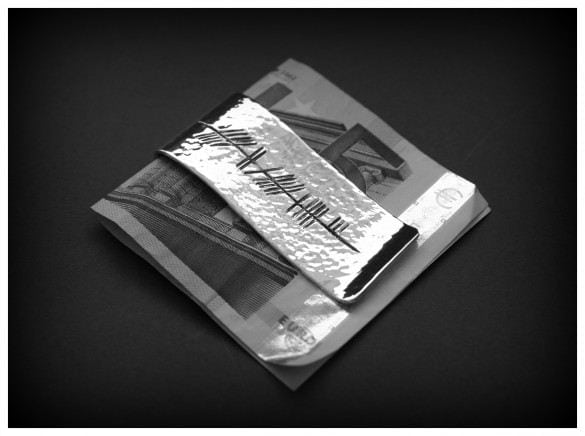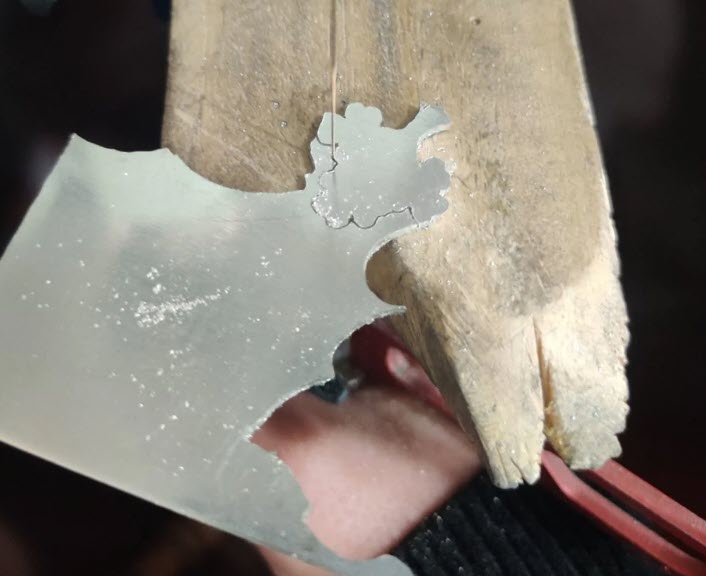
Here at Claddagh Design, we create our pieces of Celtic jewelry in a range of precious metals. Sterling silver admittedly holds a special place in our hearts. Silver is a versatile and valuable precious metal that has a variety of uses throughout the world, from medicine to photography and everything in between. But sometimes, it's not all about jewelry!
Here are 75 fascinating facts about silver you won't have heard of before.......
Historical
- The word 'silver' comes from the Anglo-Saxon word 'seolfor'.
- Silver objects have been found dating as far back as 4000 BC. Historians believe it was first discovered around a thousand years before that.
- Ancient civilizations learned how to separate silver from lead around 3000BC.
- In ancient Egypt, silver was valued much more highly than gold.
- Silver gets MANY mentions in the Bible.
- Silver was one of the first five elements discovered, along with gold, copper, lead, and iron, and has been mined for over 6000 years.
- Silver jewelry was often associated with special powers by ancient civilizations; they believed it brought healing powers, good fortune, and warded off evil spirits.
- There was a consecutive shortage of silver production between 2007 and 1990.
- In the middle ages, a pound of currency was literally a pound of silver in weight.
- The Phoenicians stored water, wine, and vinegar in silver bottles to avoid bacteria contaminating the liquids.
- Alchemists used to refer to silver by the name 'lunar' because it was associated with the moon, sea, and various lunar goddesses.
- The Greek goddess Artemis rode a silver chariot through the sky shooting silver moonbeams to earth with a silver bow.
Natural Silver
- Silver is the most reflective element, reflecting 95% of the visible light spectrum. Unless you use it in ultraviolet light, which makes it about as reflective as a stone. It is most effective immediately after placement.
- Nuggets of pure silver can be found in nature; It is found in copper, lead, and zinc ores as well as argentite, horn silver, gold, and copper-nickel.
- Silver iodide has been used to make clouds produce rain in an attempt to control hurricanes.
- Silver is stable in oxygen and water but tarnishes when exposed to ozone, hydrogen sulfide, or air containing sulfur due to a reaction with sulfur compounds which cause a black sulfide layer.
- Along with gold, silver is the most ductile (malleable) metal. An ounce of silver can be made into a wire 8,000 feet long.
- When silver is being processed, sometimes a powerful explosive called silver fulminate can form.
- The crystal structure of silver is cubic.
Geographic
- Most of the world's silver is now found in Mexico and Peru. Other countries with large quantities of silver include the US, Canada, Russia, and Australia. Most of it is found as a by-product of copper, lead and zinc mining.
- In the early 1900s there were reports of native silver 'as big as stove lids and cannon balls' being found in northern Ontario, Canada.
- In India food was sometimes decorated with a thin layer of silver, known as 'varak'.
- Argentina got its name from the Spanish adjective meaning 'silvery' because when Spanish conquerors landed there the natives presented them with silver objects.
Scientific
- Silver occurs as a natural alloy with gold, known as electrum.
- Silver is the best electric conductor of the elements; all other elements are measured against it. It is the only element that scores 100% conductivity, with the next closest element being copper at 97%.
- Silver is also the best thermal conductor of any metal but has the lowest contact resistance.
- The atomic number of silver is 47, and the atomic weight is 107.8682.
- Silver's melting point is 961.78C and its boiling point is 2162C.
- Silver is used as a food additive or colouring, and has the E number E174.
- Silver has 35 isotopes whose half-lives are known, with mass numbers 94 to 128.
- Silver is classified as a transition metal with a density of 10.5g/cm3.
Medical
- Silver is not toxic to humans! In fact, it actually kills some bacteria; but that doesn't mean you should try eating any.
- Silver compounds can be absorbed into the circulatory system and reduced silver can be deposited into various bodily tissues.
- Argyria is a skin condition that occurs as a result of silver absorption into body tissue and is characterised by grey skin pigmentation and mucous.
- Bacteria cannot develop a resistance to silver as they can with antibiotics.
- Silver compounds were used to prevent infection from spreading in war zones during World War 1.
- Silver is sometimes used – usually in alternative medicine – to treat colds and flu viruses as well as sinus and lung infections.
- Recently silver has been added to paper used by medical professionals because of its antibiotic qualities.
- Silver was once used by dentists for cavity fillings.
If you are interested in learning more about the time honored silversmith techniques we employ read more here - Claddagh Design - About Us

Money
- Until 1965 coins minted in the United States contained 90% silver. Between 1965 and 1969 it dropped to 40%. Nowadays silver consumption has outpaced output so smaller amounts of metal are used.
- A bag with $1000 in coins dating from before 1965 would contain around 715 ounces of silver.
- Silver is currently worth less than gold, but its value changes regularly according to supply and demand.
- Silver has been used as money since around 700BC.
- In 2003 the UK minted 500,000 ounces of silver into coins and medals.
- King Henry II coined the first silver currency in England in 1158.
- The Lydians were the first to use silver as money in the 7th century BC, and it was then quickly adopted by the Greeks.
- Silver was at its peak value in the late 15th century.

Language
- There is no word in the English language that rhymes with silver. Seriously, try it!
- On the periodic table the chemical symbol for silver is Ag, which comes from the latin word for silver, 'argentum'. This in turn comes from the sanksrit word 'argunas', which means 'shining'.
- The words for 'silver' and 'money' are the same in fourteen languages.
- The Anglo-Saxon word 'seolfor' (see above) is derived from the Germanic 'silabar'.
- Silver has been commonly known as 'the poor man's gold' throughout history.
- 'Sterling' refers to the silver pennies introduced by the Normans, which were decorated with stars; their word sterre became starling, which then became sterling.

Types of Silver
- The most common form of silver is sterling silver. This is actually 92.5% pure silver, with the other 7.5% made up of other metals including copper.
- Britannia silver is an alloy of 95.8% silver and 4.2% copper, also used for jewelry and silverware.
- Mexican silver is 95% silver and 5% copper.
- Alpaca silver is not actually silver at all, but an alloy of non-precious metals with properties similar to stainless steel.
- Other metals are added to silver for the purposes of jewelry making so that the silver is more durable and lasts longer.
- Fine silver is at least 99.9% pure and commercially available, but too soft for general use.
- Sterling silver has been in existence since the 13th century and originated in England.

Daily Life
- The lines on the rear window of a car that defrost ice are made from silver.
- Silver is used not only in jewelry, art, coins, and utensils, but also in dentistry, electronics, photography, mirrors, soldering and brazing alloys, and in printed circuits.
- Taking a photograph requires using a silver nitrate compound to make the celluloid film sensitive to light. Around 30% of industrial silver consumption in the US is used for this.
- Silver is used in solar panels, electrical circuits, and contacts, batteries for medical devices like pacemakers and hearing aids, and for space travel.
- In the past mirrors were backed with silver because it was highly reflective. Nowadays aluminum is used instead as it is cheaper and doesn't tarnish over time as silver does.
Other Interesting Facts
- A single grain of silver can be pressed into a sheet 150 times thinner than the average sheet of paper.
- Silver bearings are used in jet engines to give a higher degree of safety.
- Silver is harder than gold but softer than copper.
- Silver has had more patents issued with its use than all other metals combined.
- Most industrially used silver ends up in landfills after use and is permanently lost as a result.
- Around 20 billion ounces of silver is in use in the world today as coins, jewelry, religious and artistic objects.
- If you ever come across a werewolf, silver is supposedly the only way to defeat it.
- Lance Armstrong used silver-embedded fabrics during the Tour de France to control inflammation and promote healing.
- The expression 'born with a silver spoon in their mouth' actually refers to health rather than wealth, as children fed with silver spoons were believed to be healthier.
- 9000 metric tons of silver is used by the photographic industry each year; that's almost half of the total silver mined annually.
Have we missed any other interesting facts on silver? Let us know in the comments below!
We'd love to hear from you.

